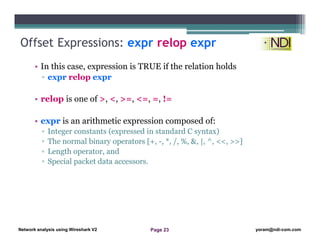

- #Wireshark filter http request how to
- #Wireshark filter http request install
- #Wireshark filter http request windows
Ip.addr = 10.43.54.65 equivalent to Wireshark SIP ) and filter out unwanted IPs: Wireshark Match HTTP requests where the last characters in the uri are the characters "gl=se": Wiresharkįilter by a protocol ( e.g.
#Wireshark filter http request windows
Ip.src=192.168.0.0/16 & ip.dst=192.168.0.0/16įilter on Windows - Filter out noise, while watching Windows Client - DC exchanges Wireshark Show only traffic in the LAN (.x), between workstations and servers - no Internet: Wireshark Tcp.dstport=25 || ip.proto=1,58 -> (icmp or ipv6 icmp) Service=25 || ip.proto=1,58 -> (icmp or ipv6 icmp) Show only SMTP (port 25) and ICMP traffic: Wireshark This is where I pulled the Wireshark display filters from: DisplayFilters - The Wireshark Wiki
#Wireshark filter http request how to
Reject Packets Based on Source or Destinationįilter here is ‘ip.src != ’ or ‘ip.dst != ’.Wireshark has been around for a long time and the display filters that exist are good reference points to learn about network (packet) traffic as well as how to navigate around various parts of sessions or streams.īelow you will find a handy reference which allows you to cross-reference many of the common Wireshark filters with their respective RSA NetWitness queries. The filter syntax used in this is : ‘ contains ’.įor example: tcp contains 01:01:04 10. Match Packets Containing a Particular Sequence This can be done by using the filter ‘tcp.port eq ’. Suppose there is a requirement to filter only those packets that are HTTP packets and have source ip as ‘192.168.1.4’. At the network layer, you can limit the results to an IP address. At the transport layer, you can specify a port using this display filter: tcp.port 80. At the application layer, you can specify a display filter for the HTTP Host header: http.host ''.

This filter helps filtering packet that match exactly with multiple conditions. You can filter on a HTTP host on multiple levels. In the example below, we tried to filter the http or arp packets using this filter: http||arp 7. So there exists the ‘||’ filter expression that ORs two conditions to display packets matching any or both the conditions. In that case one cannot apply separate filters. This works on my system: http.request and http contains 'From: ' HOWEVER, this will only filter those requests with that string somewhere in the request. Suppose, there may arise a requirement to see packets that either have protocol ‘http’ or ‘arp’. How to filter From field in HTTP header 2 Answers: 0 According to RFC2616 From: is a request header field. This filter helps filtering the packets that match either one or the other condition. In the example below we tried to filter the results for http protocol using this filter: http 6. So, if you need to track down an odd FTP traffic, then you just have to set it for ‘ftp’. It lets you narrow down to the exact protocol you need. Just write the name of that protocol in the filter tab and hit enter. http or dns Sets a filter to display all http and dns protocols. Its very easy to apply filter for a particular protocol. This is not a bug, but a limitation of the way you are trying to use. It has no way to know that traffic on, say, port 1080 is actually HTTP. Destination IP FilterĪ destination filter can be applied to restrict the packet view in wireshark to only those packets that have destination IP as mentioned in the filter. If youre looking at traffic on a different port Wireshark would normally expect traffic to be in the form for whatever service normally uses that port (if any). 1 Answer Sorted by: 5 This is what a Wireshark window looks like by default (using version 1.12. The filter applied in the example below is: ip.src = 192.168.1.1 4. Source IP FilterĪ source filter can be applied to restrict the packet view in wireshark to only those packets that have source IP as mentioned in the filter. In most of the cases the machine is connected to only one network interface but in case there are multiple, then select the interface on which you want to monitor the traffic.įrom the menu, click on ‘Capture –> Interfaces’, which will display the following screen: 3.

Once you have opened the wireshark, you have to first select a particular network interface of your machine. Select an Interface and Start the Capture
#Wireshark filter http request install
In this article we will learn how to use Wireshark network protocol analyzer display filter.Īfter downloading the executable, just click on it to install Wireshark. to see a list of terms that you can use to build your own filter expressions. You might find it useful to click on Filter: to see a list of pre-defined filters and to click on Expression. Wireshark is one of the best tool used for this purpose. 1 Answer Sorted by: 11 Put this string in the Filter: field: 'GET' and click on Apply. While debugging a particular problem, sometimes you may have to analyze the protocol traffic going out and coming into your machine.


 0 kommentar(er)
0 kommentar(er)
